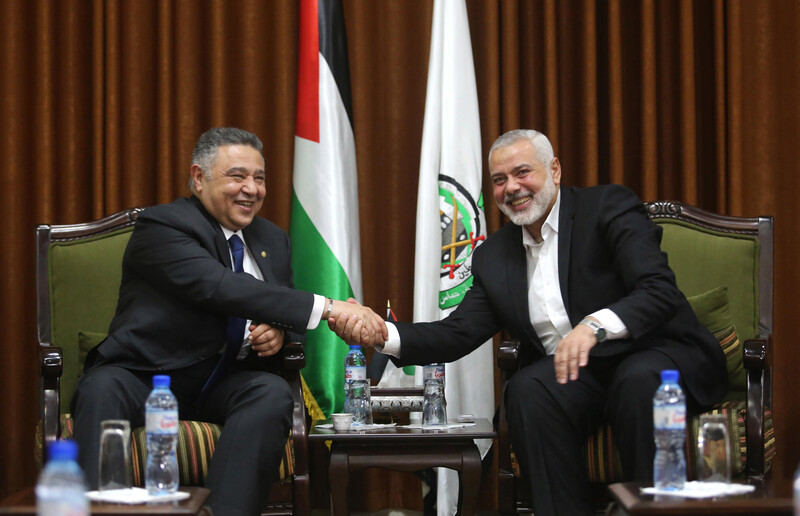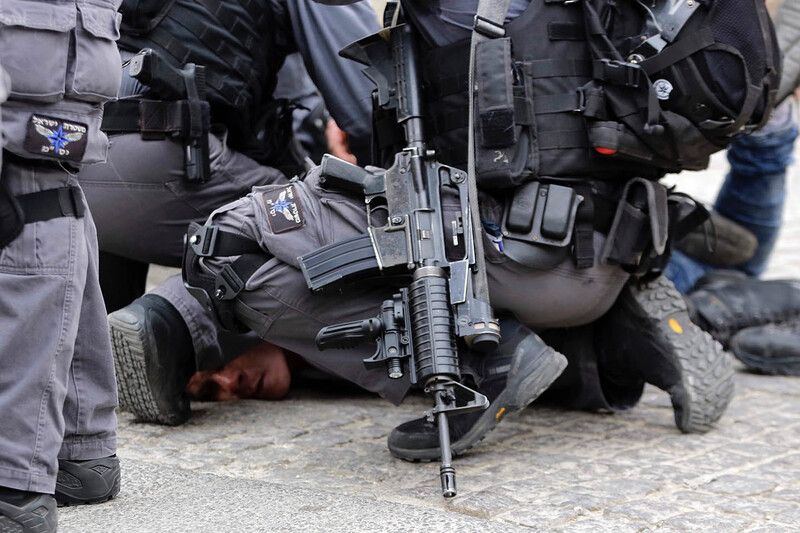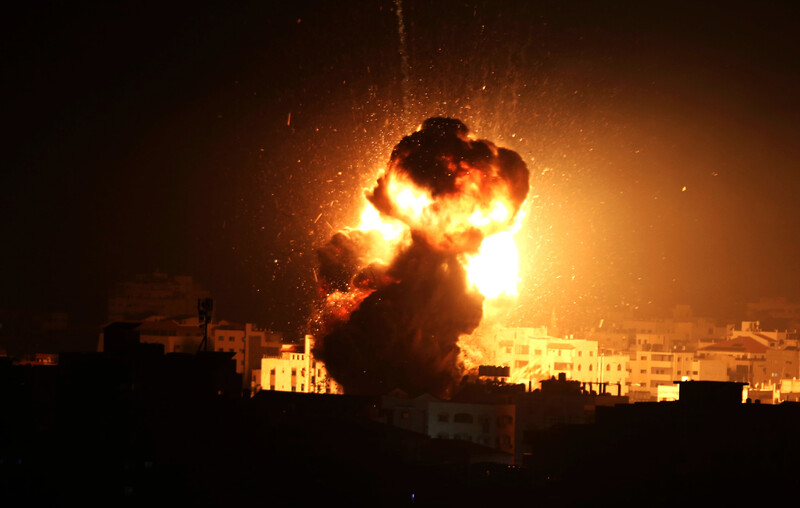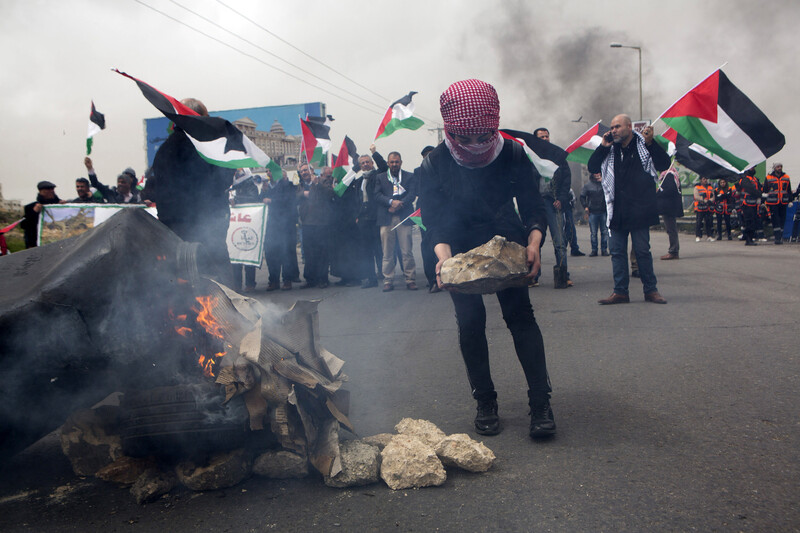The Electronic Intifada 3 April 2019

A Palestinian woman holds an olive tree as Land Day is observed in the West Bank village of Qalandiya on 30 March. Land Day is the annual commemoration of six Palestinians killed during protests against Israeli land confiscation in the Galilee in 1976.
ActiveStillsTwenty Palestinians, four of them children, were fatally injured by Israeli fire in the occupied West Bank and Gaza Strip during the month of March, or died from injuries sustained previously.
Palestinians in Gaza marked the first anniversary of the Great March of Return on 30 March. Four Palestinians were fatally injured during the anniversary protests, including two children. A fifth Palestinian was killed before protests set off that day while he was 100 meters from the boundary fence.
A total of 10 Palestinians were fatally injured while protesting along Gaza’s eastern and northern boundary with Israel during March, or died from injuries sustained during protests in previous months.
More than 200 Palestinians, including 43 children, have been killed during Great March of Return protests since their launch.
While convened in Geneva in March, the UN Human Rights Council condemned Israel’s “apparent intentional use of unlawful lethal and other excessive force” against protesters in Gaza.
A commission of inquiry formed by the human rights council has found that Israel’s use of lethal force against protesters warrants criminal investigation and prosecution and may amount to war crimes and crimes against humanity.
Meanwhile, 10 Palestinians in the West Bank were killed during the month of March.
Two Israelis killed
Among the Palestinians killed in the West Bank, Omar Amin Abu Leila, 19, was shot dead in Abwein village on 19 March during what Israel said was a firefight. Abu Leila was suspected by Israel of fatally injuring an Israeli soldier and settler two days earlier.
In multiple cases during the month, the Israeli military justified the fatal use of live fire on the grounds that Palestinians had thrown stones or fire bombs or were attempting to attack soldiers with their car.
Many if not all of these Palestinians may have been killed while they posed no actual threat to the soldiers who shot them dead.
The military made no attempt to explain the 4.5-minute gap between an alleged car ramming attack on soldiers standing next to a broken-down military vehicle on a dark road and the multiple gunshots that took the lives of Amir Mahmoud Darraj and Yousif Raed Anqawi in the central West Bank on 4 March.
On 10 March, occupation forces in the Jordan Valley shot and killed Salameh Salah Salameh Kaabneh, 22, at a checkpoint near Yafit, an Israeli settlement near Jericho. Israeli forces opened fire on the vehicle after Kaabneh allegedly did not respond to calls to stop at the checkpoint. No Israelis were injured.
A Palestinian man identified as Yasir al-Shweiki was shot dead by soldiers in the Old City of Hebron on 12 March. The military claimed he had approached soldiers with a knife; no Israelis were injured. The slain man’s father told Palestinian media that his son, a clerk for a nearby court, was distributing court notices when he was killed.
Muhammad Abd al-Fattah Shahin, 23, was shot in the chest and killed during confrontations with soldiers in the northern West Bank town of Salfit on 12 March.
Car sprayed with bullets
Israeli forces sprayed bullets at the car in which Raed Hashim Muhammad Hamdan, 21, and Zaid Imad Muhammad Nuri, 20, were traveling in Nablus in the early hours of 20 March. Israel claimed they had thrown an explosive device at soldiers.
Eyewitnesses told media that after Israeli forces fired at the car, an Israeli army bulldozer turned it over and damaged it as the screams of the two young men could be heard from inside, before they fell silent.
Stone-throwing was the justification given by the military for killing Ahmad Manasra, 23, after he tried to help a family with their broken-down car at the southern entrance to Bethlehem on 20 March. Witnesses denied Israel’s version of events.
Sajid Mizher, 17, was shot in the stomach with a live bullet while on duty as a volunteer medic during confrontations with soldiers in Dheisheh refugee camp on 27 March.
Thirty-nine Palestinians have been killed by Israeli occupation forces and settlers so far this year, or died from injuries sustained in previous years. Three Israelis were killed by Palestinians during the same period, though Palestinian factions have repudiated Israel’s claims of a nationalist motive for an Israeli woman’s killing by a Palestinian man in February.
Palestinian armed groups in Gaza launched rockets toward central Israel on two occasions during the month of March for the first time since 2014, both attributed by Israel’s military and intelligence establishment to accidental fire. Egypt and the UN scrambled to prevent a major military confrontation as Israel bombed sites across Gaza after a home north of Tel Aviv was destroyed by a rocket fired from Gaza on 25 March.
Hamas protest crackdown
Human rights groups in Gaza and beyond condemned a crackdown by Hamas authorities in the territory on protests over new taxes and high costs of living under Israeli-imposed blockade.
Hamas security forces beat demonstrators, including senior staff of the Independent Commission for Human Rights in Gaza. Human rights defenders were among the more than 1,000 people arrested, as were at least 17 journalists.
In the Israeli-controlled H2 area of Hebron, in the West Bank, three Palestinian children between the ages of 1-4 died after their house caught fire on 5 March. “As access to the area for ambulances and fire brigades requires prior coordination from the Israeli authorities, rescue services were delayed, according to Palestinian sources,” the United Nations monitoring group OCHA stated.
During a visit to Washington, Israeli Prime Minister Benjamin Netanyahu looked on as his American counterpart Donald Trump signed an executive order delivering on his promise to recognize Israel’s claims to sovereignty over the Golan Heights.
As recognized by international law, the Golan Heights is Syrian territory captured by Israel during the 1967 war along with the Palestinian West Bank and Gaza Strip, and Egypt’s Sinai Peninsula, from which Israel eventually withdrew.
After Israel claimed to annex the Golan Heights in 1981, the UN Security Council declared the move “null and void and without international legal effect.”
Al-Marsad, a human rights group based in the Golan Heights, said that “The decision sets a dangerous standard that glorifies systematic human rights abuses, legitimizes illegal aggression and occupation, and endangers peace in the Middle East.”

Palestinian children queue for food from an institution for needy families in the West Bank city of Hebron on 2 March. Al-Takiya al-Ibrahimiya, based in Hebron for centuries, provides free meals to the poor throughout the year, serving 2,000 families per week.
APA images
Palestinians protest against Israel’s siege at the Gaza seaport on 4 March.
APA images
Hamas politburo leader Ismail Haniyeh meets with Amr Hanafi, Egyptian intelligence chief, in Gaza City on 5 March at the launch of a new round of shuttle negotiations to secure a long-term truce between Hamas and Israel.
APA images
Palestinian women work at clothing factory in the West Bank city of Qalqiliya on 7 March. The factory is owned by Fatima al-Jedi, who started sewing 30 years ago with one machine. She now owns five sewing workshops in five Palestinian cities, hiring more than 150 women workers.
APA images
A Palestinian uses a bulldozer to demolish a home in Jabal al-Mukabbir, occupied East Jerusalem, on 9 March. The Jaabis family was forced by Israel to demolish their own home to avoid fines if the demolition was carried out by the Jerusalem municipality, according to the Ma’an News Agency. The demolition order was handed down on the pretext that it was built without a permit, which are nearly impossible for Palestinians living in East Jerusalem to obtain.
WAFA/APA images
Israeli homes in the Jerusalem suburb of Tzur Hadassah loom over Palestinian houses in the West Bank village of Wadi Fukin on 10 March. Wadi Fukin is sandwiched between Tzur Hadassah and Beitar Illit, one of Israel’s largest and fastest-growing settlements in the West Bank.
ActiveStills
Palestinian girls train at the Stars Academy in Gaza City on 10 March. The newly launched basketball training center is the first for girls in Gaza.
APA images
Israeli police detain a Palestinian man outside the Old City of Jerusalem after closing the entrance to the al-Aqsa mosque compound on 12 March.
WAFA/APA images
Mourners carry the bodies of Raed Hashim Muhammad Hamdan, 21, and Zaid Imad Muhammad Nuri, 20, during their funeral in the West Bank city of Nablus on 20 March. The two men were shot and killed by Israeli soldiers before dawn that day.
APA images
Palestinian Authority leader Mahmoud Abbas, center, visits Fatah spokesperson and writer Atef Abu Saif at the Palestine Medical Complex in the West Bank city of Ramallah on 20 March. Abu Saif was beaten by masked assailants in Gaza and was hospitalized for a broken leg, broken arm and fractured skull, as well as smashed fingers.
APA images
An Israeli child dressed as a Palestinian suicide bomber participates in the Purim parade in the Israeli-controlled H2 area of the West Bank city of Hebron on 21 March.
ActiveStills
Palestinians reach the boundary fence with Israel during Great March of Return protests east of Gaza City on 22 March.
APA images
A Palestinian with the “Night Confusion Units” burns tires near the boundary with Israel east of Gaza City on 23 March. The “Night Confusion” protesters burn tires and make loud sounds that disturb nearby Israeli communities.
APA images
Relatives of Palestinian Habib al-Masri, 24, shot and fatally wounded by Israeli forces during nighttime protests along Gaza’s eastern boundary, mourn during his funeral in northern Beit Hanoun on 24 March.
APA images
Israeli authorities examine a house in Mishmeret, an agricultural community north of Tel Aviv, that was directly hit by a missile fired from Gaza, 25 March. Seven people were injured in the strike.
ActiveStills
A fireball rises over Gaza City after an airstrike on a building housing the office of Hamas politburo chief Ismail Haniyeh on 25 March.
APA images
A Palestinian child stands in a Gaza City home damaged during Israeli airstrikes the previous night, 26 March. Al Mezan, a human rights group based in Gaza, said that 72 missiles were fired in 23 airstrikes across the territory, causing extensive damage and two injuries.
ActiveStills
Mourners carry the body of 17-year-old Sajid Mizher during his funeral procession in Dheisheh refugee camp near Bethlehem on 27 March. The teen was shot and killed by Israeli soldiers while on duty as a volunteer medic earlier in the day.
ActiveStills
Paramedics treat a protester during Great March of Return demonstrations east of Khan Younis, southern Gaza Strip, on 29 March.
APA images
A young Palestinian woman uses stones to close a road during Land Day protests near the Beit El Israeli military base, outside the West Bank city of Ramallah, on 30 March. Land Day is the annual commemoration of six Palestinians killed during protests against Israeli land confiscation in the Galilee in 1976.
ActiveStills
Israeli soldiers look on as Palestinian volunteer medics put their hands in the air while attempting to reach an injured protester during demonstrations marking the first anniversary of the Great March of Return, east of Gaza City, on 30 March.
ActiveStills
Israeli activists march in front of the army headquarters in Tel Aviv in solidarity with Gaza’s Great March of Return and against the Israeli siege, 30 March.
ActiveStills

